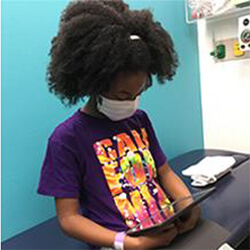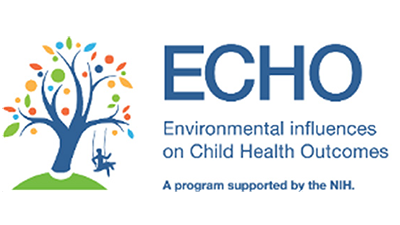Information for Investigators
TIDES I
 In the original phase of the study, TIDES began recruiting pregnant mothers in their first trimester from four study sites: the University of California, San Francisco; University of Minnesota; University of Rochester Medical Center; and Seattle Children’s Hospital/University of Washington. TIDES enrolled almost 800 mothers across sites from 2010 to 2012.
In the original phase of the study, TIDES began recruiting pregnant mothers in their first trimester from four study sites: the University of California, San Francisco; University of Minnesota; University of Rochester Medical Center; and Seattle Children’s Hospital/University of Washington. TIDES enrolled almost 800 mothers across sites from 2010 to 2012.
TIDES I aims
- Test the hypothesis that prenatal phthalate exposure is associated with reproductive outcomes in male infants
- Determine population-based norms for anogenital distance (AGD) and other genital markers
- Develop a reliable method for obtaining these measurements in a clinical setting
- Test the hypothesis that AGD is a long-lasting marker of phthalate exposure
Participants completed prenatal visits at each trimester, as well as a birth exam and 12-month follow up visit (males only).
TIDES II
TIDES II was funded by the NIH in 2015, which enabled researchers to follow study participants through preschool years. Broadly, the second phase of the study examined the effects of phthalates and stress on early life growth and neurodevelopment.
TIDES II aims
- Identify alterations in sexually dimorphic anthropometry and neurodevelopment associated with pre and postnatal phthalate exposure.
- Determine whether pre and postnatal maternal SLEs and other stress-related measures are associated with the child’s genital and neurodevelopment directly or as modifiers of phthalate effects
- Estimate associations between AGD and sexually dimorphic anthropometric and neurodevelopmental endpoints
Participants completed study visits at age 4 and age 6. The age 4 visit consisted of questionnaires completed by the TIDES mother and anthropometric measurements and urine collection from the TIDES child. The age 6 visit added pulse wave velocity (a non-invasive test to measure speed of blood flow through the arteries), saliva samples and cognitive testing with mom and child.
TIDES ECHO
 The Environmental influences on Child Health Outcomes (ECHO) Program is a federal initiative to investigate how exposure to a range of environmental factors in early development – from conception through early childhood – influences the health of children and adolescents. The ECHO program includes over 70 cohorts like TIDES. ECHO expects to include nearly 50,000 children and families from 44 states to address five important child health issues: asthma, neurodevelopment, obesity, airway health and birth outcomes. ECHO will become the largest study to follow children from birth to later childhood ever conducted in the United States.
The Environmental influences on Child Health Outcomes (ECHO) Program is a federal initiative to investigate how exposure to a range of environmental factors in early development – from conception through early childhood – influences the health of children and adolescents. The ECHO program includes over 70 cohorts like TIDES. ECHO expects to include nearly 50,000 children and families from 44 states to address five important child health issues: asthma, neurodevelopment, obesity, airway health and birth outcomes. ECHO will become the largest study to follow children from birth to later childhood ever conducted in the United States.
TIDES is participating in two ECHO Cohort Awards:
NYU ECHO
The NYU Pediatric Obesity, Metabolism and Kidney Cohort Center (NYU ECHO) endeavors to study prenatal and childhood environmental exposures. The primary objective is to examine mixtures of environmental chemicals at three time points in pregnancy and multiple postnatal periods of vulnerability, in relation to longitudinal trajectories of inutero and ex-utero growth, as well as longitudinal trajectories of oxidant stress and metabolomics in the prenatal period, infancy, and the school-age years.
ECHO PATHWAYS
The ECHO PATHWAYS study at the University of Washington is designed to investigate how nonchemical (socioeconomic and psychosocial) and common chemical (endocrine disrupting agents and air pollution) stressors during two sensitive time periods, pregnancy and childhood, influence neurodevelopment and airway function. ECHO PATHWAYS combines participants and data from three pre-existing studies: CANDLE (Conditions Affecting Neurocognitive Development and Learning in Early childhood), GAPPS (Global Alliance to Prevent Prematurity and Stillbirth), and TIDES. Mothers were approached when their child reached age 7 to complete an online questionnaire. Families completed a study visit at age 8 and age 9.
TIDES III
TIDES III was funded by the NIH to follow study participants at ages 12 and 14 and study visits are currently underway. This phase of the study is focused on examining the effects of prenatal and childhood exposure to endocrine-disrupting chemicals on adolescent airway health.
TIDES III aims
- Evaluate cross-sectional and longitudinal associations between phthalates and bisphenol from pregnancy through adolescence in relation to measures of airway health from late childhood to adolescence
- Evaluate associations of (a) prenatal and adolescent serum sex steroid hormones and (b) targeted urinary steroid metabolites in adolescence with male and female airway health at ages 12 and 14
- Characterize sex differences in associations of EDC exposures in pregnancy and adolescence with serum sex hormones and targeted urinary steroid metabolites in adolescence
- Assess serum sex hormones and targeted urinary steroid metabolites as mediators of the relationships between EDC exposures and sex-specific measures of airway health
Study Results
Please see the Publications page for a full list of publications and lay summaries for selected papers.
TIDES Data Requests
To request the use of TIDES data or biospecimens, contact research manager Amy Hoffman at amy.hoffman@seattlechildrens.org.
- The process required to share data or biospecimens with investigators outside of TIDES typically takes several months and includes establishing a Data Use Agreement and proof of IRB approval for the proposed analysis.
Requesting steps
- Submit your Proposal and Analysis Plan.
- Respond to comments or requests and submit revisions, if needed.
- Establish a Data Use Agreement or Material Use Agreement (for biospecimens).
- Provide proof of IRB approval.
- Work with the TIDES Coordinating Center Data Manager to select the variables needed and receive via a secure data transfer.
Use of data is limited to the current proposal and must be destroyed following completion of the analysis.